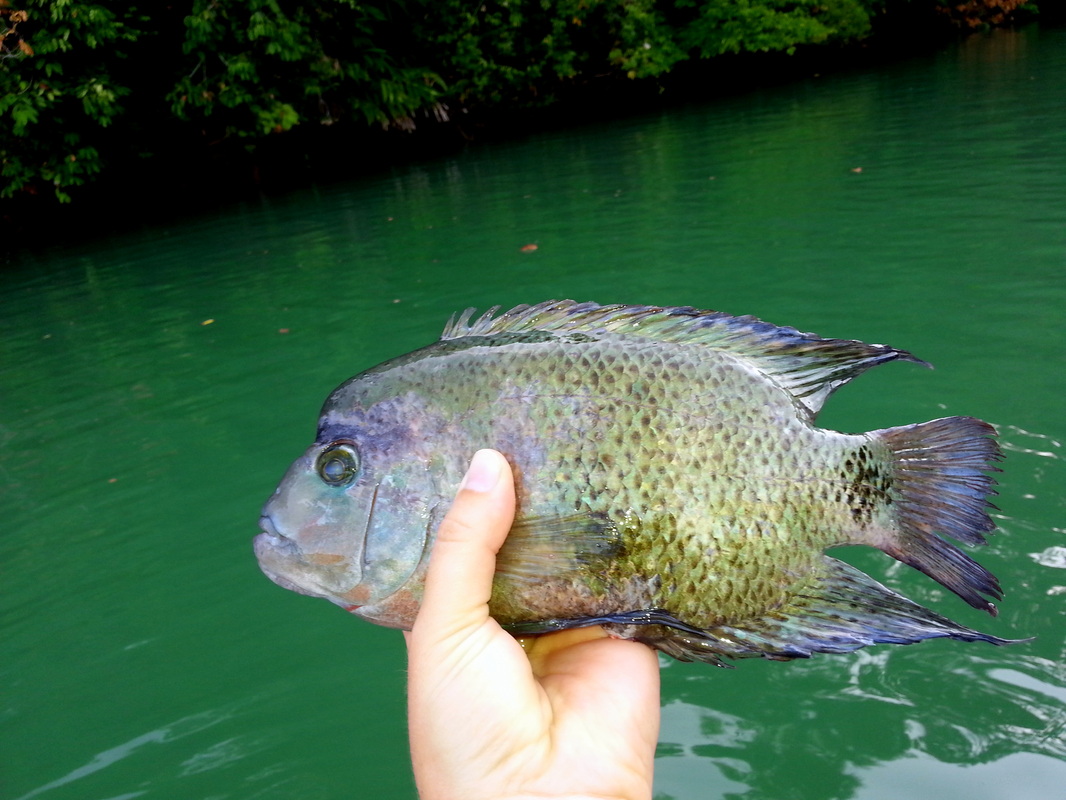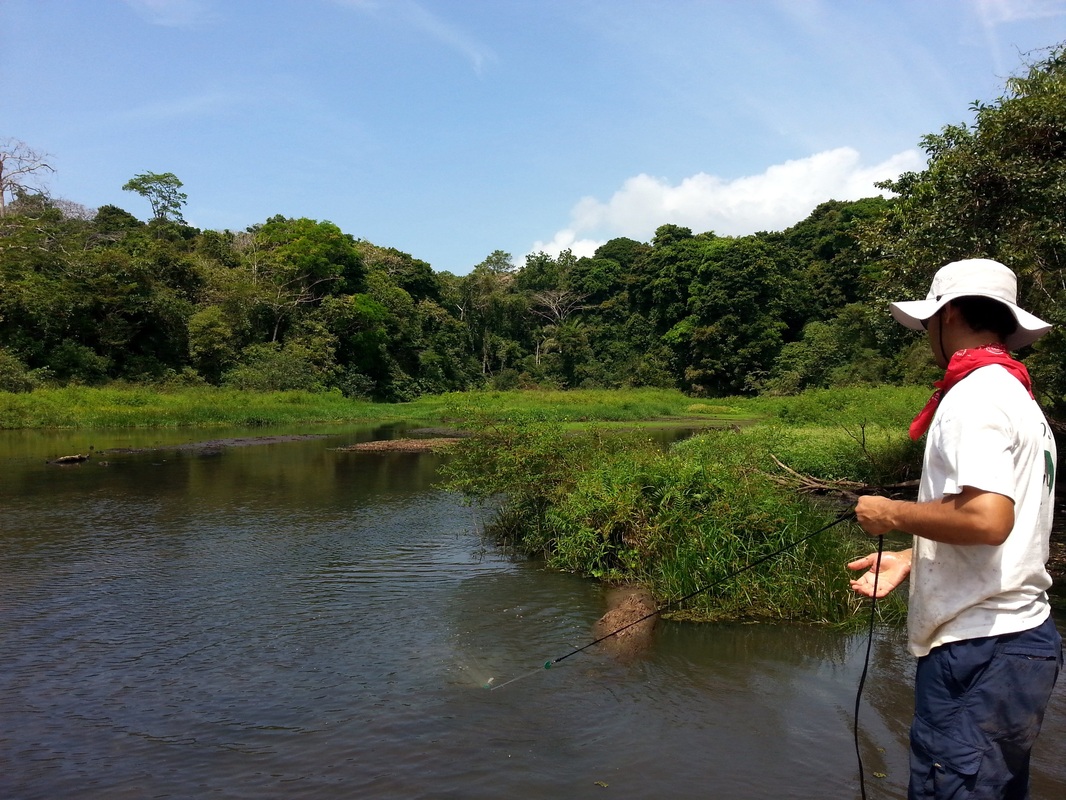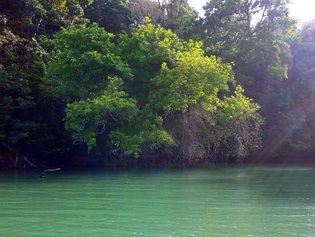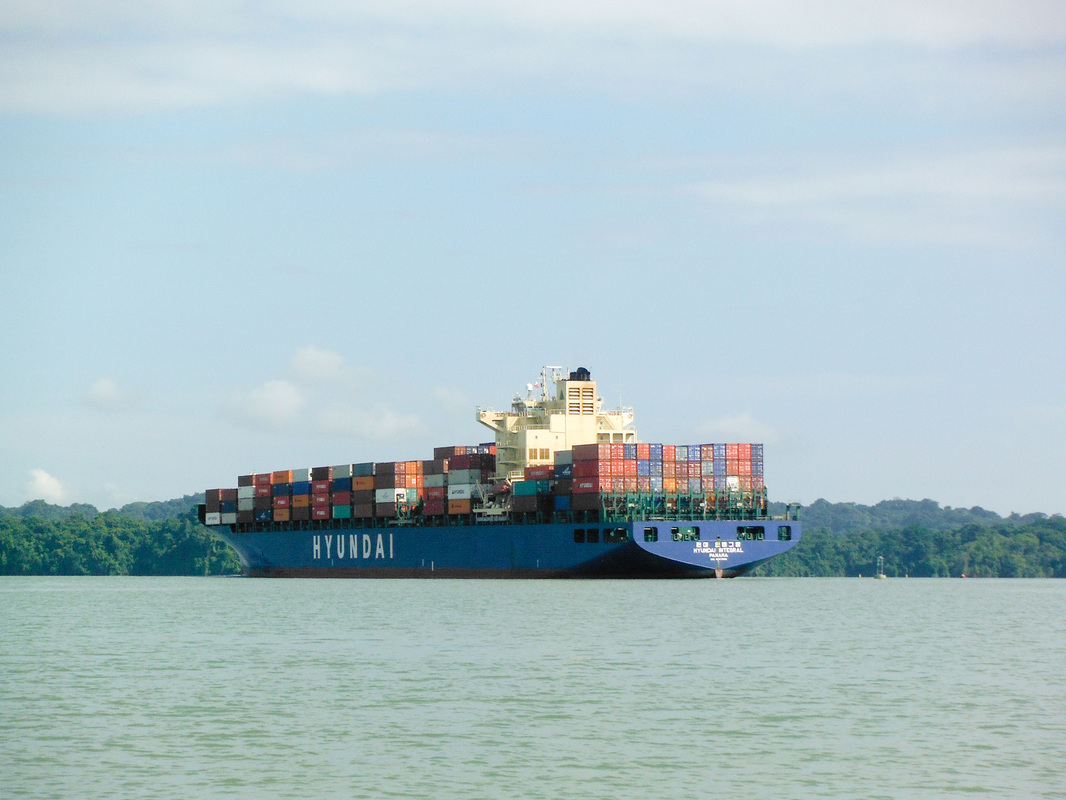|
I just returned from a 5-day sampling trip to Lake Gatun, based out of Barro Colorado Island (BCI) – a nature reserve located in the middle of the lake. This is one my primary sampling sites, as it’s one of the few places in Panama where the initial introduction of the Peacock bass in the early 1970s was well-documented, allowing us to quantitatively compare contemporary and historical data, and so track how the invasion has progressed over time. BCI is one of the world’s premiere tropical research stations, and it’s always exciting to be working at a place where so much groundbreaking ecological research has taken place (there was a BBC film crew filming there during this most recent stay!!!). We saw lots of interesting aquatic wildlife, including crocodiles (who continue to damage our gill-nets), several species of native and introduced cichlids, and something we have never seen before: the tiny Opossum pipefish (Microphis brachyurus lineatus). Like their relatives the sea horses, the males carry the eggs in a brood pouch under the body. While setting our gill-nets one morning, Luis spotted this pair of flag cichlids (Mesonautus festivus), guarding their recently hatched young. This is also an introduced species, likely an aquarium escapee. Finally, how cool is it to drive through the Panama Canal on your way to work?
0 Comments
Last December, I had the opportunity to speak with radio journalist Katharina Nickoleit about introduced fish species in Lake Gatun and the Panama Canal. The documentary aired just a few days ago on Deutschlandradio, and you can listen to the full piece here (Our discussion starts around 19:15).
Better brush up your German; otherwise you can read the Google-translated transcript here :) |





 RSS Feed
RSS Feed
